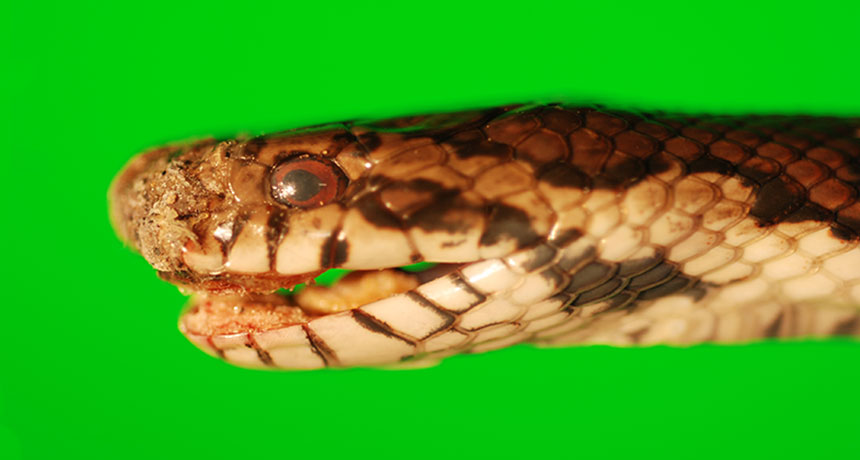A deadly fungus is infecting snake species seemingly at random
Any species in the eastern or midwestern United States could potentially be at risk, study suggests

SICK SNAKES An emerging fungal disease covers snakes (such as this milk snake, Lampropeltis triangulum) with lesions that can hurt a snake’s ability to move and eat.
© D.E. Green/USGS National Wildlife Health Center